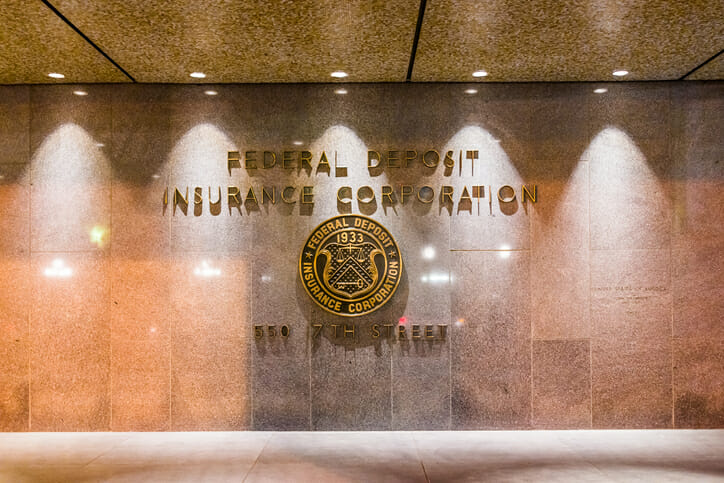There are two questions about safety when it comes to opening a high-yield savings account: First, what is the risk that your bank will fail? Second, if your bank does fail, what is the risk to your savings? The answer is that these products are generally very safe as long as you bank with an FDIC member institution. It depends entirely on where you have an account and how much is in it. Here’s how it works.
A financial advisor can help you create a financial plan to protect your finances.
What Is a High-Yield Savings Account?
A high-yield account is a form of savings account that pays higher interest rates than their standard-yield counterparts. The difference can be significant.
At time of writing, the average savings account paid interest rates between 0.42% and 1.17%. These interest rates are notably higher than in recent history, when low federal reserve rates had many banks paying less than 0.1% for their savings accounts.
High-yield savings accounts can pay more than that. A lot more. As of June 2025, many of the best online high-yield savings accounts offer rates between 3% and 4%. This is not uncommon for high-yield accounts to pay nearly10 times the interest rate of a standard-yield savings account.
With most banks, a high-yield savings account has the same rules and restrictions as a standard product. There may be monthly withdrawal limits, including transfers into your checking account, and you need to keep a minimum daily balance in the account.
The difference is that these products tend to cost more. Most banks will require that you maintain a larger minimum balance for a high-yield account than a standard savings account. If they charge a monthly fee for the account, the bank will also typically charge more than for a standard account.
With this kind of return, though, many people look at these accounts as a form of low-return investment. You can put your money in and be mostly guaranteed against losses. The question is, exactly how safe is this money?
Is Your Bank FDIC-Insured?

When it comes to banking safety, look for institutions that are insured with the FDIC. The FDIC’s job is to prevent bank runs and generally ensure the safety of U.S. banks. It does so by providing two main layers of protection for depositors.
Their high-profile protection is FDIC insurance. If you have funds deposited with a member bank, you are protected against losses up to $250,000. If your bank fails, the federal government will repay any money that you lost up to the maximum. This protection only applies per-individual, not per-account. It does apply per-individual per-institution, though. So in the unlikely event that you have accounts at multiple banks that fail, the government will cover your losses at each institution.
Any money you have on deposit in excess of $250,000 is not insured by the FDIC. If your bank fails you will lose that extra money. In addition, this only applies to depository accounts at depository institutions. The FDIC does not insure investment products or investment portfolios.
Less well-known is the FDIC’s program to sell and recover failing banks.
Bank failure is more common in the United States than many consumers may realize. Whenever an FDIC-insured bank goes out of business or otherwise fails, the FDIC tries to find another institution to take over its accounts. It almost always succeeds, which is why banks seem to go out of business so rarely. The new institution takes over the old institution’s depositor accounts in total.
However it’s important to understand that these protections only apply to banks that are members of the FDIC program. Non-member institutions do not get FDIC insurance and the FDIC will not try to find a buyer in case of failure.
What Happens If Your Bank Fails?
If a bank fails and it is insured by the FDIC, customer deposits are protected up to $250,000 per depositor, per bank, for each account type. The FDIC typically responds quickly, often arranging for another bank to take over the accounts or providing a check for the insured amount. Most customers regain access to their money within one business day, though access to certain services may be briefly interrupted.
Accounts that exceed the $250,000 limit are only insured up to that amount. Any funds above that threshold are not automatically guaranteed. The FDIC will try to recover those funds by selling the failed bank’s assets and distributing the proceeds, but there is no set timeline or assurance that customers will receive the full excess amount.
If the failed institution is not covered by FDIC insurance, customer deposits are not protected by the federal government. In these cases, individuals may have to rely on legal proceedings or the institution’s asset recovery process to try to recover any money. For this reason, it’s important to confirm that your bank is part of the FDIC or, for credit unions, the NCUA.
How to Tell If Your Banking Institution Safe
When you evaluate the safety of a banking product, you should look carefully at the institution itself.
Standard depositor banks are usually a safe business model based on holding assets and extending secured loans. However, in recent years many online-only banks have opened with alternative business models. They may offer particularly high interest rates because they can make risky, unsecured, or otherwise more speculative investments.
Cryptocurrency banks can be an example of this alternate model. Many offer interest rates of 10% or more. But these institutions have also taken on losses during crypto crashes. And without FDIC protection, that money can be gone.
The best way to secure yourself against an unreliable institution is to only bank with FDIC member banks. High-risk institutions generally cannot get FDIC insurance and the degree of oversight involved protects you against scams and other illegitimate activity, all of which is a good thing when it comes to depositing your money. Your interest rates may fluctuate over time, but as long as you bank with an insured institution your money is safer.
Bottom Line

As long as you bank with an FDIC-insured institution, high-yield savings accounts are generally safe products that are protected from bank failure.
Tips to Make Money With Your Savings
- A financial advisor can help protect and grow your savings with a financial plan. Finding one doesn’t have to be hard. SmartAsset’s free tool matches you with financial advisors who serve your area, and you can interview your advisor matches at no cost to decide which one is right for you. If you’re ready to find an advisor who can help you achieve your financial goals, get started now.
- A high-yield savings account can be a great way to make money from your money with higher interest. Here’s how to find one.
Photo credit: ©iStock.com/aquaArts studio, ©iStock.com/krblokhin, ©iStock.com/Tempura
